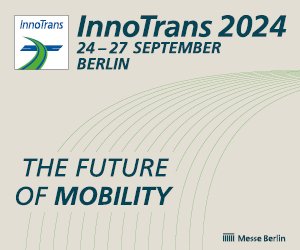The superintendent of the Project Structuring area of the BNDES, Henrique da Costa Pinto, has, within the space of two years, amassed more than 500 gigabytes of information, including reports, spreadsheets and even geological studies, all of which to back up the Invitation to Bid for the concession of the project for the High Speed Train to connect Campinas, São Paulo and Rio de Janeiro, scheduled for December 16th.
Defended by the new President-Elect, Dilma Rousseff, the total value of the Project has been estimated at R$ 33 billion, including a credit of R$ 20 billion in credit from the BNDES, with guarantee from the Treasury and a subsidy should the demand be frustrated. In an interview to O Estado de S. Paulo newspaper, Mr. Pinto says that the bullet train shall have sufficient demand so that the bill amounting to billions is not left to be settled by the taxpayer.
Why a bullet train between Rio de Janeiro and São Paulo?
This stretch has a high population density and the ideal distance for this type of Project. There are already evident signs of bottlenecks at the local airports and also saturation of the current road between the cities, the Presidente Dutra Motorway. If we compare with other solutions taken up in the world, this is definitely the best option. This concept did not arise here. Studies with the same conclusion have been produced since the 1980s.
There is the impression that the Government got attached to the idea of a bullet train and only then checked the feasibility of the project. Was it a case of the contrary?
There is a real transport problem in this region, which is very dense, and not because we just want to construct a bullet train. I have the impression that Brazilians think we cannot do it or do not deserve it. This is a psychological problem, and not even my friends believe in it. This project is both serious and feasible, and has been studied in depth. There is no improvisation whatsoever. There has been resistance in countries that have implemented such projects, but when people see it works, everyone wants more. Things shall not be any different here. There are people who feel the estimate of 90 thousand passengers a day is overestimated.Many people say things, yet do not assess the specific case at hand. We shall use a complex model, with maps prepared by microregion and also more than 17 thousand interviews in airport, bus stations and toll booths. We have visited all the countries that have such a system up and running. The study was conducted with data for 2008, when Viracopos Airport had not grown so much. This is just one of the points that suggest that the usage may even increase.
Is the fare of R$ 199 realistic for economic feasibility?
This is the price that optimizes the system, but the model is dynamic. The Air Shuttle shall not close down, and there shall be keen competition. The maximum fare to be charged by the High Speed Train, in economy class, shall be R$ 199, but this could be more aggressive in relation to the aeroplane as a means of transport, giving discounts at certain times of day or compensating for the 40% capacity which it could have allocated to Business Class. This would be very good for the consumer.
If, economically, it is highly attractive, why add a guarantee and possible subsidy of R$ 5 billion from the Treasury for financing over 30 years?
We needed to provide conditions to attract experienced groups, which are very few in the world. They need guarantees to attract investors to be part of the consortiums.
So was this a decision to exceed the BNDES financing limit and provide guarantees from the Treasury only to boost the competition at the auction?
This is the reality of the country. This needs a long period of time and, at the moment, only the BNDES has provided this.
And what about the inclusion of a subsidy for the case of frustrated demand, doesn’t this send a message that the Government itself still has doubts?
On the contrary. The risk of construction and demand is taken up by the developer. What we have done has been to soothe some of this risk, at the commencement of the operation. The groups have already conducted their own demand studies, and I would be very surprised if they had some doubt about them not needing the subsidy. However, this has been very important.
But doesn’t the taxpayer run the risk of having to foot the bill, should the bullet train be a flop?
No, they shall not be paying the bill. We are not transferring the risk to the Treasury. What we do in this case is renegotiation, or stretching the time frame. The money returns.
The two metropolises that shall be linked by the bullet train both have serious transport problems. Wouldn’t it be better to invest these billions in expanding and upgrading the Underground system?
The High Speed Train (HST) is just as necessary as any other transport need. And here we do not need a Sophie’s choice. The way it has been planned, there shall be no competition with the budget resources allocated to projects like the Underground. Much to the contrary, this shall help to develop an industry compatible with the Underground, everything is electric. Nowadays, concentration in Rio de Janeiro and São Paulo has brought chronic transport problems. If we think about the decentralization vector of the HST, it also helps in this respect, this being a current and a future problem.


Seja o primeiro a comentar